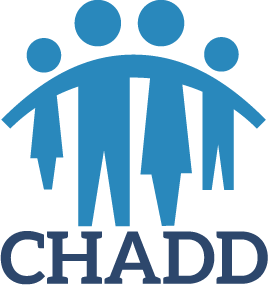With the beginning of Black History Month, CHADD initiated a series of conversations on building a more culturally sensitive world though creating awareness, listening more thoughtfully, and developing a deeper understanding of the African-American experience in the United States.
CHADD launched a dedicated webpage to Black History Month, sharing podcasts and articles featuring experts on ADHD and African Americans. The organization will focus on identifying ways of better meeting the needs of the ADHD and African-American community and will provide diversity, equity, and inclusion training to committee members and chapter leaders.

“CHADD has begun taking intentional, meaningful actions to increase awareness of social injustice and identify ways we can meet the needs of underserved communities,” says Patricia M. Hudak, president of CHADD. “[CHADD CEO Robert Cattoi] and I have been reaching out to Black and Hispanic professional organizations, such as clinicians, educators, etc., to create partnerships with CHADD. This could include individual members serving on our various boards and committees, collaborating with local chapter leaders, conducting national webinars or podcasts.”
Ms. Hudak says she is excited that CHADD is forming a diversity, equity, and inclusion committee to identify and recommend specific, measurable actions for reaching all underserved communities.
For years, CHADD has reached out to underserved communities to share science-based information on ADHD. The organization’s efforts changed as those communities’ needs changed. CHADD leadership continues to assess how it presents information and strives to be more culturally aware.
“We hope to reach out at the local level to Black, LatinX, and other underserved communities,” Mr. Cattoi says. “This endeavor is just starting. But we recognize that this is an important issue we must address.”
Recognizing barriers to remove
African Americans continue to face health disparities. When they seek evaluation and treatment for ADHD, those disparities can be strikingly evident. Moreover, inaccurate information and deliberate misinformation is often presented as fact, creating additional barriers for families and individuals.
“They’re based around different factors, such as not being able to have access to care, or access to opportunities for care, or access to resources,” says Brandi Walker, PhD, a clinical psychologist at
Womack Army Medical Center at Fort Bragg, North Carolina, who works directly with service members and their families. “A lot of those barriers are because of socioeconomic status. They may be because of demographic differences, such as race or ethnicity, maybe age or disability status. So, there are several reasons that kind of contribute to health disparities and why they continue to exist.”
Students with ADHD are at a high risk of leaving high school before graduation, says Dr. Walker. Those who continue still struggle with their education and often don’t receive the support they need.
“Most kids get diagnosed at age seven, but an African-American child may not get their diagnosis until nine,” Dr. Walker says. “So then, it’s a two-year loss of academic achievement, or they may be minimally achieving when they could have been achieving well beyond what they actually are getting because of the diagnosis.”
“There’s this unfortunate aspect, particularly with African-American youth, that for some families ADHD may be underdiagnosed because of the stigma of mental health, the worry and concern about the label ‘ADHD,’” adds Nekeshia Hammond, PsyD. “It’s definitely a real concern to properly evaluate for ADHD in Black youth.”
Sarah Brown, director of CHADD’s National Resource Center on ADHD, says CHADD is listening to these and other experts to improve how it provides resources.
“We need the support of the communities that we want to serve to understand where the barriers are to diagnosis and treatment,” Ms. Brown says. “With input from these communities, we can work to educate healthcare providers and educators about the barriers then to develop a plan to remove barriers to diagnosis and treatment.”
Resources for Black History Month:


